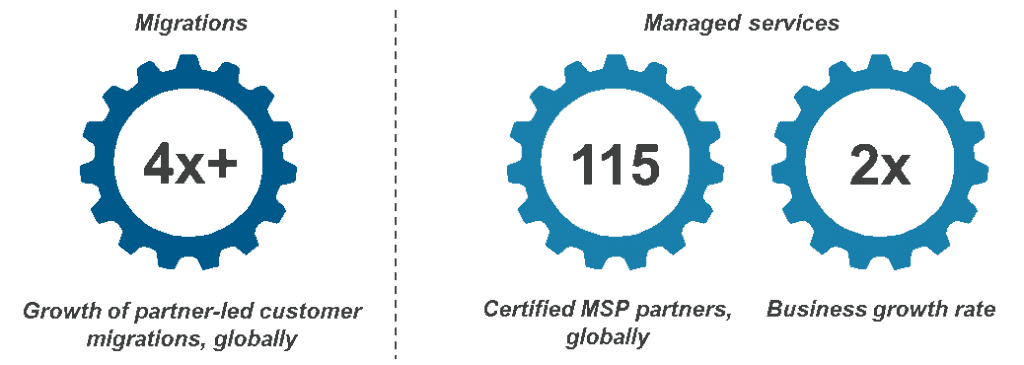
Amazon Web Services’ (AWS) Summit in Mumbai last week made it clear that its trifecta juggernaut in customer centricity, long-term thinking, and innovation is giving other public cloud vendors a run for their money.
Here are our key takeaways for AWS clients, partners, and the ecosystem.
Solid growth momentum
Sustaining a growth rate in the mid-teens is a herculean task for most multi billion-dollar businesses. But AWS has an annual run rate of US$31 billion, and clocked-in a 41 percent Y/Y growth rate, underpinned by millions of monthly active customers and tens of thousands of AWS Partner Network (APN) partners around the globe.
Deep focus on the ecosystem
Much of this momentum is due to AWS’ heavy focus on developing a global footprint of partners to help enterprises migrate and transform their workloads. Taking a cautious and guided approach to partner segmentation, it not only broke out its Consulting and Technology partners, but also segmented its Consulting Partners into five principal categories: Global SIs and Influencers, National SIs, Born-in-the-Cloud, Distributors, and Hosters. This is helping AWS establish specific innovation and support agendas for its partners to grow.

This partner ecosystem focus is increasingly enabling enterprises to achieve real business value through the cloud, including top-line/bottom-line growth, additional RoI, lower cost of operations, and higher application developer productivity. And AWS’ dedicated focus on articulating business benefits such as operational agility, operational resilience, and talent productivity, along with the underlying tenets of the cloud economy, has helped it onboard more enterprises.
Cloud convenience will need an accelerated Outposts push
Enterprises are looking for cloud convenience, which often manifests in location-agnostic (on-premise or on cloud) access to AWS cloud services. To bring native AWS services, infrastructure, and operating models to virtually any datacenter, co-location space, or on-premises facility, the company launched AWS Outposts at its 2018 re:Invent conference. Outposts is expected to go live by H2 2019 for Indian customers. Despite this, AWS is trailing in this front, playing catch-up to Microsoft Azure, which launched Azure Stack almost a year ago (and previewed a version in 2015.) At the same time, AWS will have to educate its enterprise clients and ease their apprehensions about vendor lock-in challenges while leveraging integrated hardware and software packages.
Helping clients avoid consumption fatigue
Shifting the focus toward AWS’ innovation agenda, the public cloud vendor launched over 1,800 services and features in 2018. As enterprises grapple with the rising number of tools and technologies at their disposal – which can lead to consumption fatigue – this can manifest in different ways:
- Large enterprises will often depend on system integrators to help them unlock value out of latest technologies – AWS’ success in furthering the partner ecosystem will be crucial here
- For SMBs, AWS will build on its touchpoints with the segment, something that Microsoft and Google already enjoy because of their respective enterprise productivity suites.
What’s next on AWS’ innovation front
There seemed to be a lack of development on the quantum or high-performance computing front. Client conversations suggested that they are struggling to figure out the right use cases depending on whether they need more compute and/or data – something AWS can help educate them on.
Gazing into the enterprise cloud future
We do not believe enterprises will move their entire estates to the public cloud. Indeed, as they transition to the cloud, we expect the future to be decidedly hybrid, i.e., a mix of on-premise and public, as this approach will allow every organization to choose where each application should reside based on its unique needs.
To deliver on this hybrid need, product vendors are inking partnerships with virtualization software companies. And the services and product line-ups are piquing enterprises’ curiosity. To help stake its claim in this hybrid space, AWS Outposts does have a VMware Cloud option, which is AWS’ hardware with the same configurations but using VMware’s Software Defined Data Center (SDDC) stack running on EC2 bare-metal. But it will need to educate the marketplace to accelerate adoption.
The bottom line is that although AWS is facing some challenges on the competitor front – with Azure and a reinvigorated Google Cloud under Thomas Kurian – it is well positioned on account of a solid growth platform and ecosystem leverage, which it demonstrated at the 2019 India Summit.










